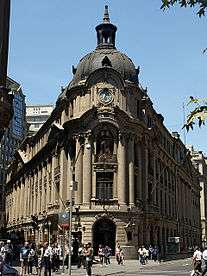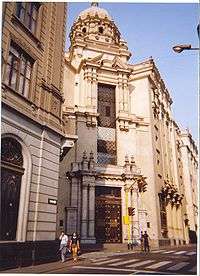Pacific Alliance
Alianza del Pacífico Pacific Alliance |
||||
|---|---|---|---|---|
|
||||
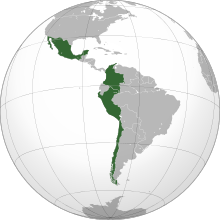 Dark green: Full members.
|
||||
| Official languages | Spanish | |||
| Type | Trade bloc | |||
| Membership |
Observer states
|
|||
| Leaders | ||||
| • | President pro tempore | |||
| Establishment | 6 June 2012 | |||
| Population | ||||
| • | 2012 estimate | 206,831,371a | ||
| GDP (PPP) | 2014 estimate | |||
| • | Total | $3,572 Billions | ||
| • | Per capita | $16,506 | ||
| Website alianzapacifico.net/en |
||||
| a. | Combined census estimates of member states. | |||
The Pacific Alliance (Spanish: Alianza del Pacífico) is a Latin American trade bloc, with some features of further integration. It currently has four member states — Chile, Colombia, Mexico and Peru, which all border the Pacific Ocean.
History
On 28 April 2011, former president of Peru Alan García organized a meeting with the presidents of Chile, Colombia and Mexico. This group of political leaders issued the Declaración de Lima, a statement of intent to establish the Pacific Alliance.[5] The initial goal of the alliance was to further free trade with "a clear orientation toward Asia", and economic integration.[6]
The four founding nations of the Pacific Alliance represent nearly 36% of Latin American GDP. If counted as a single country this group of nations would be the sixth largest economy in the world with a PPP GDP of more than US$3 trillion.[7] According to the World Trade Organization (WTO), the countries of the Pacific Alliance together exported about $445 billion in 2010, almost 60% more than Mercosur, the other predominant Latin American trade bloc. Individually and collectively, the core countries of the Pacific Alliance have been deemed "The Pacific Pumas" by political scientists, for their model of economic and political development.
At the VII Pacific Alliance Summit in Cali, Colombia, on May 22, 2013, Costa Rica signed a trade agreement with Colombia, and later in the summit received approval for full membership from all the founding members.[8] Costa Rica is finishing up the process so it can be readily incorporated as the Alliance's fifth member. At the same summit seven observers were admitted: the Dominican Republic, Ecuador, El Salvador, France, Honduras, Paraguay, and Portugal.[9]
The Pacific Alliance currently has 49 observer states, including economic heavyweights such as Japan, China, Germany, France, the United Kingdom, and the United States, as well as three of the five Southern Common Market (Mercosur) countries and a member of the Bolivarian Alliance for the Peoples of Our America (ALBA).[10] Analysts describe the Pacific Alliance as a tool to practise a kind of joint “nation-branding” to promote trade and investment and to enhance the international status and visibility of the member states.[11]
Projects
In addition to reducing trade barriers, the Pacific Alliance has begun several other projects for regional integration, including visa-free travel, a common stock exchange, and joint embassies in several countries.
Mercado Integrado Latinoamericano
The Mercado Integrado Latinoamericano (MILA) originally integrated the stock markets of Colombia (Colombia Stock Exchange), Chile (Santiago Stock Exchange), and Peru (Lima Stock Exchange), and is seen as a foundation for the Alliance's economic integration. These three stock markets began their integration in November 2010; this made it Latin America's largest market according to number of issuers, the second by market capitalization, and the third by turnover.
The Mexican Stock Exchange began the process of incorporation into MILA and its full incorporation was expected by the year 2014. The Mexican Stock Exchange took the step of acquiring a total of 3.79 million shares of the Lima Stock Exchange (BVL), equivalent to 6.7% of the shares of Series A of that market.[12] This is part of an agreement for a strategic partnership in order to develop joint business activities and development of the stock markets of Peru and Mexico, and eventually complete integration into MILA.
The Mexican Stock Exchange met the timeframe and announced the first trade made as part of MILA on 2 December 2014.[13] The trade on MIILA was a $1,415 purchase of 200 shares in Chilean retailer Falabella, executed by GBM Mexico through GBM Chile.[13] With the entry of Mexico into MILA, the integrated stock market now counts 780 issuers among the four countries, making it the biggest market by number of listed companies in Latin America, and the biggest in terms of market capitalization, according to the World Federation of Exchanges.[13] The joint capitalization of the four bourses tops US$1.25 trillion, making it larger than the US$1.22 trillion BM&F Bovespa.[12]
Joint diplomatic missions
Among the more important agreements that have been reached is the creation of joint diplomatic missions (embassies, consulates, etc.) that will provide citizens of Pacific Alliance member states with needed diplomatic services. The Declaration of Cali highlights the importance of the opening of an embassy shared between Chile, Colombia, Mexico and Peru in Ghana, as well as the agreement between Chile and Colombia to share embassies in Algeria and Morocco and between Colombia and Peru to share an embassy in Vietnam. The Declaration of Cali encourages these countries to move forward on these initiatives. In November 2014 Mexico opened its first trade office in Africa; located in Casablanca and shared with the other Pacific Alliance members.[14]
Expansion
As of October 2016, there are 49 observer states and 2 candidate countries, in process of full membership: Costa Rica & Panama.
Canada has also been mentioned as a candidate to join the alliance, and called a "natural fit" by Mexico's vice-minister of foreign affairs, Sergio Alcocer.[15] It has free-trade agreements with the four founding members, and has been encouraged by regional leaders to join the alliance. However the Canadian government has yet to upgrade its observer status to observer-candidate as it is still determining whether or not to become a member.[15][16]
Costa Rica began the process of joining on 10 February 2014 at the eighth summit of the Alliance in Cartagena de Indias, Colombia, when President Laura Chinchilla signed a protocol at a plenary session finalizing the decision to join the alliance.[17] The country has since postponed its incorporation into the alliance indefinitely, pending consultations by its presidential economic council.[18]
Ecuador has been critical of the alliance in conjunction with other leaders of ALBA,[19] but its president, Rafael Correa, has also speculated on a possible future bid if integration advances in areas other than trade.[20]
Guatemala has expressed concrete interest in joining the Pacific Alliance and is pursuing trade deals with current members as a precursor to a possible membership application.[9]
Panama has expressed interest in joining the Alliance,[21] and is an official observer-candidate according to the website.[22] Panama has already signed trade deals with Colombia, Peru and Chile, and reached an agreement with Mexico to sign a free-trade deal in March 2014.[23] While fulfilling most of the criteria to enter in the alliance,[24] the country has so far refused to commit itself to full membership.[25]
Paraguay, a founding member of Mercosur and observer of the Pacific Alliance, has begun pursuing free-trade deals with current members as a precursor to a possible membership application.[26] Paraguay was suspended from Mercosur following the impeachment of Fernando Lugo, although Paraguay asked Mercosur to lift the sanction. After the election and inauguration of Horacio Cartes, Paraguay has so far claimed "Paraguay would not abandon Mercosur", but assured it will seek to join the alliance.[27] The government has said it is reportedly considering joining the Pacific Alliance in addition to rejoining Mercosur.[26][28]
U.S. Vice President Joe Biden expressed that the United States was willing to join the Pacific Alliance as an observer on May 23, 2013, in Bogotá, Colombia, during a bilateral meeting with Colombian President Juan Manuel Santos.[29]
Argentine president-elect Mauricio Macri, during his campaign and in press conferences after the election, has expressed his desire to bring his country closer to the Pacific Alliance and also work on integration between the bloc and his country's Mercosur.[30]
Uruguay is also considering joining the Pacific Alliance.
Honduras officially applied for formal membership in October 2016.
Members

The following countries are full members, in the process of becoming full members or observers.
Full members
Observers
 Argentina[31]
Argentina[31] Australia[2]
Australia[2] Austria
Austria.svg.png) Belgium
Belgium Canada
Canada China
China 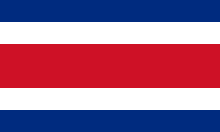 Costa Rica (in the process of becoming a full member)
Costa Rica (in the process of becoming a full member) Denmark
Denmark  Dominica
Dominica  Dominican Republic
Dominican Republic  Ecuador
Ecuador El Salvador
El Salvador  Finland
Finland  France
France  Georgia
Georgia Germany
Germany  Greece
Greece  Guatemala
Guatemala  Haiti
Haiti 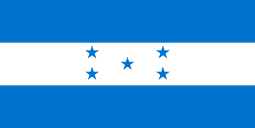 Honduras
Honduras  Hungary
Hungary  India
India  Indonesia
Indonesia  Israel
Israel  Italy
Italy  Japan
Japan  Morocco
Morocco  Netherlands
Netherlands  New Zealand
New Zealand Panama (in the process of becoming a full member)
Panama (in the process of becoming a full member) Paraguay
Paraguay Poland
Poland Portugal
Portugal  Singapore
Singapore  South Korea
South Korea  Spain
Spain  Sweden
Sweden  Switzerland
Switzerland  Thailand
Thailand Trinidad and Tobago
Trinidad and Tobago  Turkey
Turkey  United Kingdom
United Kingdom  United States
United States Uruguay
Uruguay
Passports gallery
See also
- The Pacific Pumas
- Mercosur
- Trans-Pacific Strategic Economic Partnership Agreement
- Bolivarian Alliance for the Americas
- Trans-Pacific Partnership
References
- ↑ "Perú dijo que Argentina es bienvenida a la Alianza del Pacífico". Retrieved 4 March 2016.
- 1 2 https://alianzapacifico.net/en/paises/#observer-countries
- ↑ https://twitter.com/GeorgiaGeneva/status/623530234684534784
- ↑ http://www.portafolio.co/economia/parlamento-alianza-del-pacifico
- ↑ Alianza del Pacifico. "Antecedentes". Alianza del Pacífico (in Spanish). Alianza del Pacífico.
El 28 de abril de 2011, los Jefes de Estado de Chile, Colombia, México y Perú acordaron en la Declaración de Lima, establecer la Alianza del Pacífico con el objetivo de "avanzar progresivamente hacia la libre circulación de bienes, servicios, capitales y personas".
- ↑ Associated Press (31 July 2011). "Pacific Alliance unites Mexico, Colombia, Peru and Chile economies; 1st step: dropping visas". The Washington Post. Retrieved 2012-06-07.
- ↑ List of countries by GDP (PPP)
- ↑ http://news.yahoo.com/lightbox/colombias-president-santos-signs-fta-costa-rican-counterpart-photo-040600110.html
- 1 2 Wyss, Jim. "Costa Rica and Guatemala move closer to joining Pacific Alliance bloc". Miami Herald. Miami Herald Media Co. Retrieved 7 October 2013.
- ↑ German Institute of Global and Area Studies (15 August 2016). "The Pacific Alliance: Nation-Branding through Regional Organisations". German Institute of Global and Area Studies. Retrieved 2016-08-16.
- ↑ German Institute of Global and Area Studies (15 August 2016). "The Pacific Alliance: Nation-Branding through Regional Organisations". German Institute of Global and Area Studies. Retrieved 2016-08-16.
- 1 2 Peter Kohli. "The Andean Exchange: A Developing Market Opportunity In Our Backyard". Nasdaq. Retrieved 9 January 2015.
- 1 2 3 Jude Webber. "Mexico exchange names Sacristán as new head". Financial Times. Retrieved 9 January 2015.
- ↑ "Mexico opens 1st trade office in Africa". Fox News Networks. Retrieved November 28, 2014.
- 1 2 Clark, Campbell (20 May 2013). "Canada called 'a natural fit' for Pacific Alliance". The Globe and Mail. Retrieved 8 October 2013.
- ↑ Scoffield, Heather (23 May 2013). "Harper says it's 'too early' to decide whether to join Pacific Alliance". The Canadian Press. Bell Media. Retrieved 8 October 2013.
- ↑ Costa Rica firma la hoja de ruta para su adhesión a la Alianza del Pacífico La Nación, 2014-02-10. (Spanish)
- ↑ Gerardo Ruiz, Ramón (17 Jun 2015). "Costa Rica posterga su ingreso a la Alianza del Pacífico". La Nación. La Nación. Retrieved 26 July 2015.
- ↑ Romero, Maria Teresa (18 October 2013). "Pacific Alliance Offers Hope for Latin American Collaboration". PanAm Post. AMTG Solutions. Retrieved 21 October 2013.
- ↑ MercoPress (31 July 2013). "Ecuador's Correa pondering whether to join Mercosur or the Pacific Alliance". MercoPress. South Atlantic News Agency. Retrieved 7 October 2013.
- ↑ Economist (18 May 2013). "Latin American geoeconomics: A continental divide". Retrieved 28 May 2013.
- ↑ "Observer Countries". Pacific Alliance website. Pacific Alliance. Retrieved 13 November 2013.
- ↑ "Panamá y México sellan Tratado de Libre Comercio". Excelsior. 18 March 2014.
- ↑ "Panama Nears Trade Deal with Mexico: Next Stop, Pacific Alliance". PanAm post. 24 March 2014.
- ↑ "Panamá, cada vez más cerca de la Alianza del Pacífico". La Estrella de Panamá. 22 June 2015.
- 1 2 MercoPress (2 August 2013). "Paraguay advancing on trade agreement with Mexico, previous to requesting Pacific Alliance membership". MercoPress. South Atlantic News Agency. Retrieved 21 October 2013.
- ↑ NAM News Network; Mercopress (7 July 2013). "Paraguay Talking Trade with Mexico, US, Pacific Alliance". NAM News Network. Non-Aligned Movement News Network. Retrieved 21 October 2013.
- ↑ Kenneally, Ivan (3 August 2013). "Mercosur, Pacific Alliance Battle Over Paraguay". Sourcing Journal. Hertsman Media Group. Retrieved 21 October 2013.
- ↑ Xinhua English (28 May 2013). "U.S. willing to join Pacific Alliance as observer: Biden". sina English. SINA. Retrieved 21 October 2013.
- ↑ "La política exterior de Macri".
- ↑ http://www.minutouno.com/notas/1465217-la-integracion-argentina-la-alianza-del-pacifico-debe-darse-el-mercosur
